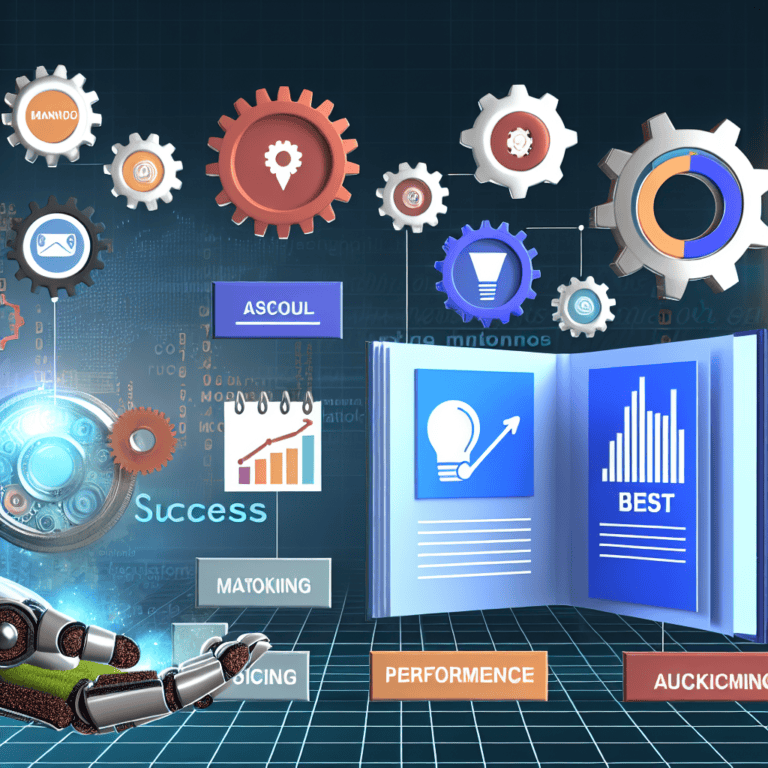How to Update Legacy IT Infrastructure
As a small business owner, you know the importance of staying ahead of the curve as technology advances.
But let’s be honest: updating your legacy IT infrastructure can feel like solving a Rubik’s Cube blindfolded—complicated and never-ending. Yet, as intimidating as it may seem, keeping your technology up to date is crucial for success in today’s digital age.
Don’t worry, though; we’ve got you covered with this blog post on how to update your outdated IT infrastructure without losing your mind.
So, let’s get ready to turn that tangled mess into a smooth and efficient system!
What is Legacy IT Infrastructure?
Information technology (IT) infrastructure refers to the hardware, software, networks, data centers, and related equipment used to develop, test, deliver, monitor, control, and support IT services. Over time, parts of the IT infrastructure age and become difficult or expensive to maintain—this is known as legacy IT infrastructure.
Updating legacy software and infrastructure can improve security, lower costs, and enable innovation, but it requires thoughtful planning and execution. Legacy It can be characterized by the following:
Outdated Operating Systems & Technology
Now, legacy infrastructure relies on older and outdated technologies that may no longer be supported or receive regular updates from vendors. Mainframe systems, older versions of Windows servers, etc., often fall into this category.
The lack of updates leaves legacy systems more vulnerable to cyber threats. Additionally, outdated technology can limit the capabilities of the IT infrastructure, hindering the organization’s ability to deliver efficient and effective services.
Vendor Support Issues
Vendors naturally phase out support and maintenance for older product versions and hardware components over time. Continuing to operate unsupported infrastructure increases operational risks and makes it difficult to find affordable vendor support.
This can result in costly custom solutions or even replacing entire systems. Furthermore, a lack of vendor support can make it challenging to integrate new technologies and updates into the existing infrastructure.
Integration Complexities
Over the years, layers upon layers of new systems get interfaced into the legacy environment. This accumulation of technical debt is a challenge to maintaining legacy systems and upgrading discrete components without unintended ripple effects.
As a result, system integrations become more complex and time-consuming, leading to delayed project timelines and increased costs. This can also result in a less efficient and effective workflow, as employees are forced to navigate through multiple systems and processes.
Compliance Gaps
Legacy systems often lag behind evolving regulatory, cybersecurity, and compliance frameworks. Significant examples include PCI DSS standards for payment systems and HIPAA controls for protecting sensitive patient health data.
Without proper updates and maintenance, legacy systems can become non-compliant with these regulations, putting businesses at risk of fines and legal repercussions. Moreover, as compliance standards continue to evolve and tighten, the gap between what a legacy system can provide and what is required by law widens.
Cost Burdens
Supporting legacy systems, specifically obsolete equipment, niche skill sets, and sub-optimal processes, ultimately translates into much higher operating costs for legacy infrastructure.
Why Should You Modernize Legacy IT Infrastructure?
While refreshing legacy IT infrastructure requires upfront investments, continuing with the status quo also carries an actual cost. Some key reasons to get modern hardware and software include:
Improving Security
Updating infrastructure to leverage modern security tools, tactics, and processes significantly reduces cyber risk. Support for multi-factor authentication, data encryption, and endpoint detection—key protections—are often lacking in legacy environments.
Additionally, legacy infrastructure is often not compliant with current regulations and standards, leaving organizations vulnerable to costly penalties and reputational damage. By modernizing legacy IT infrastructure, companies can ensure their data and systems are secure from cyber threats.
Enabling Innovation
Freeing resources from “keeping the lights on” allows IT teams to shift focus towards delivering business innovation. Instead of perpetual maintenance, talent can be leveraged to drive digital transformation initiatives.
This can result in faster time-to-market, increased customer satisfaction, and improved competitiveness. Modern cloud computing services also offer scalable and flexible solutions, enabling organizations to quickly adapt to changing business needs.
Boosting Reliability
Purpose-built modern infrastructure with automated failover capabilities, predictive analytics, and resilient components minimize downtime events. Legacy systems are generally less reliable by nature.
Without proper maintenance, they become increasingly unstable and prone to crashes. This can cause major disruptions to business operations and result in loss of revenue.
Driving Efficiency and Productivity
Newer technologies provide better workload optimization, scalability, and automation capabilities. Consolidating servers, simplifying administration, and right-sizing contracts yield measurable cost savings.
Additionally, modern systems can handle higher volumes of data and processes, resulting in increased productivity for organizations.
Supporting Growth
Modernization creates capacity for expansion. Legacy infrastructure often strains under new demands. A flexible platform allows resources to be adjusted to match evolving business requirements.
This enables organizations to quickly respond to market changes and capitalize on new opportunities. In today’s fast-paced business landscape, the ability to support growth and adapt to changing needs is crucial for success.
How Do You Update Legacy Infrastructure with Modern Technologies?
Approaching a legacy overhaul requires meticulous planning and phased execution. Critical facets of the strategy include:
#1) Assess Your Inventory
Catalog all infrastructure components, map interdependencies, and designate criticality. This foundational step enables shaping the transformation roadmap.
Once you have a clear understanding of your current infrastructure, you can identify which components are outdated and need to be updated with modern technologies. This will also help determine the resources and timeline required for the overhaul.
#2) Prioritization
With inventory insights, prioritize modernization initiatives based on security concerns, cost savings potential, business goals, etc. Consider starting with low-risk, high-impact areas to build momentum and demonstrate value.
Additionally, prioritize based on the level of disruption each component may cause during the modernization process. This will help minimize downtime and potential business disruptions.
#3) Plan Your Budget
Develop TCO models, measure ROI, and explore sourcing options to fund the modernization programs. Balance migration costs with post-migration savings. Consider using tools and automation to help reduce costs and speed up the process.
It’s also crucial to regularly review and adjust your budget as needed, considering any unexpected challenges or changes in business priorities.
#4) Assess the Skills of Your Staff
Determine the availability of in-house skills to execute technology refresh programs. Identify any skills gaps and create a plan to address them through training or hiring. Consider partnering with external vendors for specialized skills or support.
It’s important to involve your staff in the planning and implementation process, as they will ultimately be responsible for maintaining and utilizing the new technology. Encourage open communication and provide resources for continuous learning and development.
#5) Implement a Phased Roadmap
Plot a multi-year roadmap focused on updating the highest priority systems first while maintaining operations. The roadmap serves as a strategic guide. It should include timelines, budgets, and resource allocations for each phase.
Consider the potential impact of the new system on business operations and plan accordingly to minimize disruption. Regularly review and update the roadmap as needed to accommodate changes in technology, business needs, or budget constraints.
#6) Transform Your Architecture
Re-platform legacy applications on modern infrastructure like cloud IaaS, PaaS, or SaaS. Adjust architecture to leverage new capabilities. This will improve scalability, reliability, and cost-effectiveness.
Continuously monitor and assess your architecture to identify areas for improvement and innovation. Embrace emerging technologies such as artificial intelligence (AI) or machine learning (ML) to enhance functionality and stay ahead of the competition.
#7) Migrate Your Data
Data migration is pivotal for legacy system replacements. Meticulously plan data extraction, transformation, cleansing, and loading into new databases. Use automated tools and scripts for faster and more accurate migrations.
Implement data governance processes to ensure data integrity, security, and compliance. Leverage data analytics to gain insights and drive business decisions.
#8) Set Up Integrations and Test
Set up integrations between new and existing systems and components. Test and verify that data is being transmitted accurately between systems. Identify any issues and troubleshoot accordingly.
You should also test the modernized system’s overall functionality to ensure it meets business requirements and performs as expected. Make any necessary adjustments or fixes before deploying to production.
#9) Decommission Old Systems
As legacy modernization initiatives are complete, safely decommission the outdated platforms. you should stop keeping existing legacy systems running and allocate resources to supporting and maintaining the modernized system.
This step is crucial for data security and compliance. Keeping old systems active can leave them vulnerable to cyber attacks or breaches, which could result in significant financial and reputational damage.
Key Considerations for Specific Infrastructure Domains
While you modernize legacy systems, there are several best practices that apply across infrastructure domains. Here are some additional considerations related to specific areas like networks, storage, servers, and applications:
Network Infrastructure
- Assess WAN connectivity options to improve speed, agility, and scale – MPLS, SD-WAN, 5G.
- Refresh LAN equipment (switches, routers, firewalls) to enable segmentation, monitoring, and automation.
- Evaluate SASE for secure web gateway and zero trust network access capabilities.
Storage Infrastructure
- Determine needs for performance, capacity, data protection, and costs before storage upgrade.
- Weigh the benefits/drawbacks of SAN vs NAS vs Hyperconverged infrastructure.
- Consider cloud storage integration for tiering, backup, and disaster recovery.
Server Infrastructure
- Audit server workloads to right-size on-premises vs cloud platforms.
- Shift physical servers to flexible virtualized environments or cloud IaaS.
- Standardize builds using configuration management tools for consistency.
Application Infrastructure
- Assess SaaS alternatives to replace custom legacy applications.
- Re-platform legacy apps onto PaaS for efficiency and scalability gains.
- Refactor monoliths into cloud-native microservices leveraging containers and orchestration.
Key Partners for Legacy System Modernization Initiatives
While internal IT teams steer legacy modernization strategy, specialized external expertise is also crucial for smooth execution across areas like:
Consulting
Experienced IT advisors provide vendor-neutral perspectives regarding modernization priorities, roadmaps, architectures etc. They also help identify potential roadblocks and suggest mitigation strategies.
Systems Integration
SI partners seamlessly deliver complex infrastructure refresh programs encompassing platforms and data. They also help set up and optimize integrations with existing systems.
Managed Services
MSPs efficiently manage infrastructure operations, freeing internal capacity towards transformation initiatives. They also contribute on-demand expertise and resources to sustainably support modernized systems.
Cloud Platforms
Public cloud providers (AWS, Azure, GCP) offer on-demand modern IT resources. They also offer a variety of services and tools for application modernization, including containerization, serverless computing, and DevOps automation.
Support and Training
Obtain temporary or ongoing talent to fill legacy infrastructure skill gaps hampering modernization.
Final Thoughts on Updating Legacy Systems
Legacy IT infrastructure modernization may seem like a daunting and overwhelming task, but with the right mindset and strategy, organizations can greatly benefit from it.
The initial effort and investment may be significant, but the long-term benefits in terms of enhanced security and future growth potential cannot be ignored. It’s important for businesses to approach modernization in a thoughtful and phased manner, prioritizing key areas for improvement and harnessing the power of technological innovations.
Each modernization building block may offer distinct benefits, but when combined together, their impact on the business is truly exponential So don’t let your old IT systems hold you back from achieving your full potential – embrace the change and pave the way for a successful and thriving future.
As they say, out with the old, in with the new – it’s time to level up your IT infrastructure for a better tomorrow! Your business demands it, and your customers deserve it!






